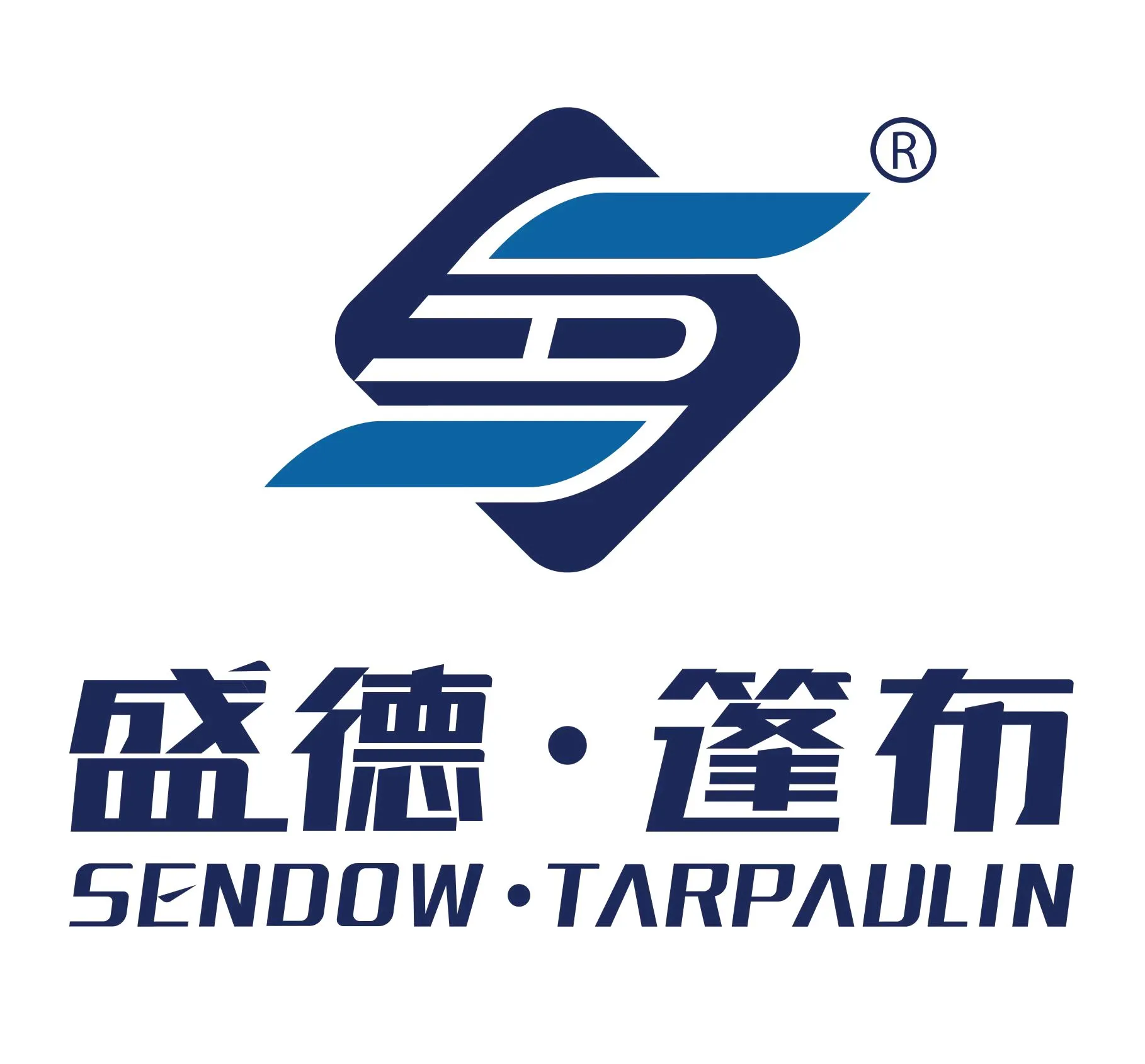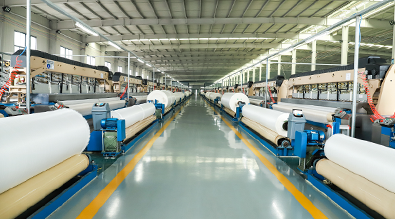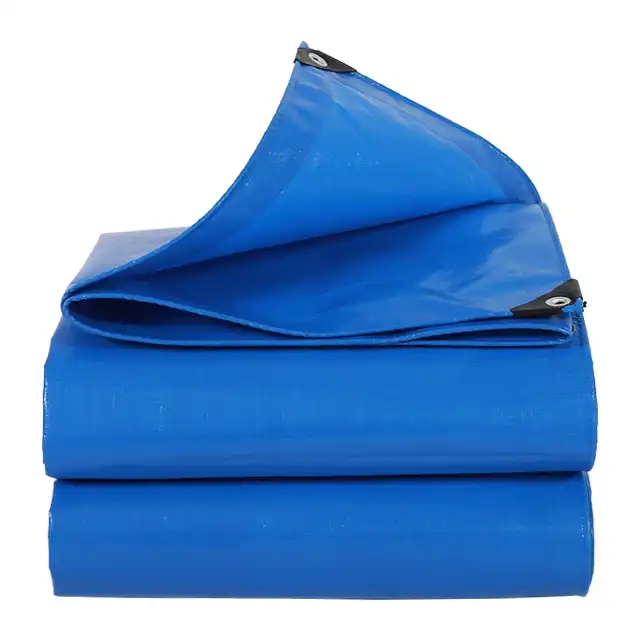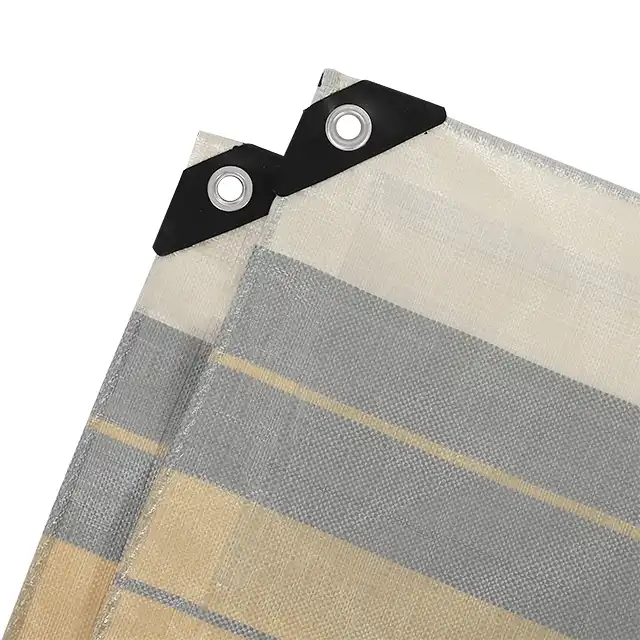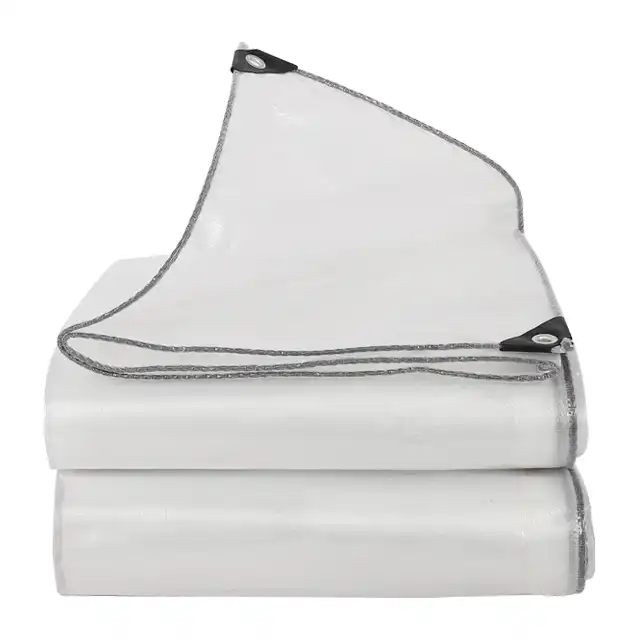What Are Roof Tarps and How Do They Work?
Roof tarps are essential temporary protective coverings designed to shield damaged roofs from further deterioration caused by weather elements. When your roof sustains damage from storms, fallen trees, or aging materials, a high-quality roof tarp provides immediate protection until permanent repairs can be made. These waterproof, durable sheets are typically made from polyethylene and come in various thicknesses and sizes to accommodate different roof dimensions and damage severity. Roof tarps work by creating a waterproof barrier that prevents rain, snow, and debris from entering your home through compromised roof sections, effectively minimizing interior damage and helping homeowners avoid costly repairs due to secondary water damage.
Understanding Roof Tarps: Materials and Construction

The Composition of Quality Roof Tarps
High-performance Roof Tarps are manufactured using advanced materials that ensure durability and effectiveness in challenging weather conditions. The foundation of premium tarps begins with high-density polyethylene (HDPE) fibers, which are tightly woven into a resilient fabric. This fabric is then laminated on both sides with low-density polyethylene (LDPE) coating to create a fully waterproof barrier. SENDOW TARPAULIN, produced by Linyi Shengde Plastic Co., Ltd., exemplifies this quality construction with weights ranging from 65gsm to 280gsm depending on the application requirements. The manufacturing process involves sophisticated yarn extrusion with thicknesses from 400D to 2500D, followed by precision weaving on advanced water-jet looms that can produce seamless widths up to 5 meters. This eliminates the weak points typically found in joined tarps, making them particularly valuable for large-scale roof protection. The final coating process is carefully monitored by professional technicians who ensure uniform application and complete waterproofing, resulting in Roof Tarps that provide reliable protection against rain, snow, and UV exposure during the vulnerable period following roof damage.
Weight Classifications and Selection Criteria
Selecting the appropriate Roof Tarps requires understanding their weight classifications and how these translate to performance in different situations. Middle-duty PE tarpaulins, weighing between 100gsm-180gsm with mesh counts of 10x10 to 14x14 and thickness between 7-12 mil, offer an optimal balance of durability and manageability for most residential roof protection applications. The weight classification directly impacts a tarp's resistance to tearing, puncturing, and ultraviolet degradation, with heavier options providing more robust protection but at the cost of increased difficulty in installation. SENDOW Roof Tarps incorporate UV treatments ranging from 1%-7%, which significantly extends their service life by preventing deterioration from sun exposure – a critical factor for installations that may need to remain in place for extended periods. Color selection also plays an important role in tarp performance; while blue is traditional, white tarps reflect more sunlight and reduce heat absorption, which can be beneficial in warmer climates to prevent heat buildup under the tarp. The monthly production capacity of 4000MT ensures consistent availability even during high-demand periods following major weather events, while the availability of OEM/ODM customization allows contractors and disaster response teams to obtain tarps precisely tailored to specific regional weather challenges and installation requirements.
Advanced Features for Enhanced Protection
Modern Roof Tarps have evolved significantly beyond simple waterproof sheets to incorporate advanced features that provide comprehensive protection for damaged structures. SENDOW Roof Tarps incorporate tear-resistant reinforcement at stress points and edges, dramatically increasing their resistance to wind damage during storms. The 100% waterproof construction is achieved through heat-sealed seams rather than stitching, eliminating potential water entry points and ensuring complete impermeability even during heavy, sustained rainfall. The Arctic Flexibility feature maintains tarp pliability even in extreme cold temperatures, preventing cracking and ensuring continued protection during winter months – particularly important for regions experiencing freeze-thaw cycles. Anti-corrosion treatments protect the tarp from chemical degradation when exposed to environmental pollutants, while shrink-proof construction maintains dimensional stability regardless of temperature fluctuations. These technical advancements make modern Roof Tarps significantly more effective than previous generations, providing reliable protection for periods of several months rather than weeks. The combination of these features enables a single high-quality tarp installation to safeguard a damaged roof throughout the often lengthy insurance assessment and contractor scheduling process, preventing secondary damage and preserving structural integrity until permanent repairs can be completed.
Installation Techniques and Best Practices
Proper Measurement and Tarp Selection
Accurate measurement and appropriate tarp selection form the foundation of effective Roof Tarps installation. Before purchasing a tarp, homeowners or contractors should measure the damaged area thoroughly, adding at least 4 feet of extra coverage on all sides to ensure complete protection of vulnerable sections. This extra material allows for proper anchoring while maintaining full coverage even during wind events. When selecting Roof Tarps for installation, consideration must be given to the anticipated duration of use, local weather conditions, and the specific nature of the roof damage. SENDOW TARPAULIN offers customizable sizes upon request, allowing for precise matching to unique roof dimensions without wasteful overlapping or insufficient coverage. For structures with complex roof geometries or multiple damaged sections, multiple coordinated tarps may provide more effective protection than a single oversized sheet. The weight of the selected tarp also impacts installation methodology – heavier tarps (180gsm+) provide superior protection but require additional personnel or equipment for safe placement, especially on steeper roof pitches. Professional installers typically recommend middle-duty PE tarpaulins (100-180gsm) with appropriate UV treatment for most residential emergency roof protection scenarios, as they balance durability with manageable weight for secure installation. By properly measuring the damaged area and selecting Roof Tarps with appropriate dimensions and specifications, homeowners can ensure complete protection while minimizing installation complications.
Secure Anchoring Methods for Different Roof Types
Anchoring Roof Tarps effectively requires different approaches depending on roof design, materials, and damage patterns. For asphalt shingle roofs, which represent the majority of residential applications, installers typically secure tarps using 1x3-inch wooden battens rather than potentially damaging nails or screws driven directly into shingles. These battens distribute tension across a wider area and prevent the tarp from tearing at fastening points during wind events. On metal roofs, specialized clamps that attach to standing seams provide anchor points without penetrating the metal surface, preserving warranty compliance while securing the waterproof barrier. For flat roofs with parapets, sandwich anchoring methods where the tarp extends over the parapet and is secured on the exterior wall provide excellent wind resistance without creating new penetrations in the roof membrane. SENDOW Roof Tarps feature reinforced edges with integrated grommets spaced approximately 18 inches apart, enabling multiple secure attachment options regardless of roof type. For emergency situations where standard anchoring materials are unavailable, the tarps' anti-freezing and tear-resistant properties allow temporary securing with available materials until proper installation can be completed. Professional installers recommend creating controlled drainage channels rather than allowing water to pool on the tarp surface, which can be achieved by strategically positioning anchoring points to create slight slopes toward existing drainage systems. This comprehensive approach to anchoring ensures that Roof Tarps remain securely in place despite challenging weather conditions, providing continuous protection until permanent repairs can be implemented.
Maintenance and Monitoring Requirements
Even properly installed Roof Tarps require regular monitoring and maintenance to ensure continued protection of the damaged structure. Weekly visual inspections should be conducted to identify any signs of tarp displacement, punctures, or collecting debris that could compromise waterproofing effectiveness. After significant weather events such as high winds or heavy snowfall, immediate inspection is recommended to verify the tarp remains properly tensioned and secured. Any accumulated debris should be carefully removed to prevent pooling water and reduce excessive weight that could stress the anchoring system. SENDOW's highly durable PE tarpaulins with weights ranging from 100gsm to 180gsm demonstrate excellent resistance to punctures and tears, but even these quality materials benefit from regular maintenance checks. In situations where Roof Tarps must remain in place for extended periods, UV-resistant variants with 5-7% UV treatment should be selected to prevent degradation from prolonged sun exposure. Most quality tarps, including SENDOW's products, can provide effective protection for 3-6 months when properly maintained, though they should not be considered permanent solutions. During winter months, snow accumulation should be carefully monitored as the additional weight can stress both the tarp and the damaged roof structure beneath. The arctic flexibility feature ensures that SENDOW Roof Tarps remain pliable rather than brittle during cold temperatures, but excessive snow loads should still be carefully managed. Through consistent monitoring and basic maintenance, properly installed Roof Tarps can provide reliable protection throughout the assessment, planning, and scheduling phases of permanent roof repair, preventing further property damage and preserving structural integrity.
Specialized Applications and Emergency Response
Disaster Response and Immediate Protection
When natural disasters strike, Roof Tarps become critical components of immediate response efforts to prevent further damage to affected structures. In hurricane and tornado situations, SENDOW's tear-resistant and 100% waterproof tarps provide essential protection for homes with partially compromised roofs, preventing water infiltration that could lead to interior structural damage, mold growth, and loss of personal property. Disaster response teams prioritize quick deployment of these protective coverings, often within hours of the event, to stabilize damaged structures until assessments and permanent repairs can be coordinated. The lightweight yet durable construction of professional-grade Roof Tarps, weighing between 100-180gsm, allows rapid transportation and deployment across affected regions, with a single emergency response vehicle able to carry sufficient material to protect multiple damaged structures. SENDOW TARPAULIN's monthly production capacity of 4000MT enables rapid scaling of manufacturing in anticipation of severe weather events, ensuring adequate supply even during widespread disaster scenarios. For emergency deployments, bright blue tarps are often preferred as they provide high visibility from aerial assessment teams, helping disaster management authorities identify affected structures more efficiently. The waterproof and shrink-proof characteristics make these tarps immediately effective even when installed in less-than-ideal circumstances by non-professionals or homeowners themselves. This immediate protection capability has made quality Roof Tarps indispensable tools in disaster management protocols worldwide, with organizations like FEMA and Red Cross maintaining strategic reserves of these materials for rapid deployment when communities face unexpected roofing emergencies.
Seasonal Protection for Vulnerable Structures
Beyond emergency applications, Roof Tarps serve valuable protective functions for seasonally vulnerable structures facing predictable environmental challenges. In regions with heavy snowfall, preventative installation of reinforced tarps before winter helps protect older roofs from snow load damage and ice dam formation. The anti-freezing and arctic flexibility features of SENDOW Roof Tarps make them particularly suitable for this application, as they maintain their protective properties even in extreme cold. For agricultural structures such as barns and equipment sheds, seasonal tarp protection provides cost-effective extension of roof service life, with UV-treated tarps offering the added benefit of moderating interior temperatures during summer months. Historical buildings undergoing phased restoration often utilize specialized Roof Tarps as protective covers between project phases, with the waterproof yet breathable characteristics preventing moisture accumulation while allowing the structure to ventilate appropriately. Construction projects facing scheduled delays can implement temporary roof protection using heavy-duty tarps (180gsm+) to protect unfinished structures and building materials from weather exposure, potentially saving thousands in material replacement costs. Vacation homes and seasonal properties benefit from protective covering during off-seasons, with properly installed tarps preventing pest infiltration while maintaining structural integrity between occupancy periods. The versatility of modern tarp materials, with SENDOW offering weights from 65gsm to 280gsm and customizable dimensions up to 5.1 meters in width, allows property managers to select precisely the right protection level for each specific application. This preventative approach to seasonal protection demonstrates the evolution of Roof Tarps from purely emergency solutions to proactive tools for property preservation across diverse structural applications.
Integration with Permanent Repair Planning
Quality Roof Tarps provide more than just temporary protection; they create a stable environment that facilitates thorough assessment and strategic planning for permanent repairs. Insurance adjusters benefit from the controlled environment created by properly installed tarps, allowing more accurate damage assessment without the complicating factors of ongoing water infiltration or environmental exposure. This precision in damage evaluation often translates to more comprehensive coverage and appropriate repair funding allocations. Roofing contractors utilize the stabilized conditions beneath quality tarps like those from SENDOW TARPAULIN to develop detailed repair strategies, take precise measurements, and create accurate material requirements – all without the pressure of working in an actively deteriorating situation. The waterproof characteristics of professional-grade Roof Tarps enable structural drying to commence immediately after installation, potentially salvaging building materials that would otherwise require replacement and reducing overall project costs. For complex repairs requiring specialized materials with extended lead times, the tear-resistant and UV-treated properties of high-performance tarps provide reliable protection throughout the procurement period, which can extend to several months for custom materials or during high-demand recovery periods. Building owners can leverage this protected planning period to evaluate comprehensive roofing options rather than rushing into potentially inadequate emergency repairs. The integration of quality temporary protection into the permanent repair process represents a sophisticated approach to property recovery, where the initial emergency response seamlessly transitions into strategic restoration planning. By selecting Roof Tarps with appropriate durability characteristics (UV treatment 1%-7% and weights appropriate for anticipated duration), property owners ensure continuous protection throughout the entire assessment, planning, procurement, and repair implementation cycle.
Conclusion
Roof tarps are far more than simple emergency coverings – they represent a critical first line of defense against escalating property damage following roof compromises. By selecting high-quality, properly sized tarpaulins with appropriate features and ensuring correct installation, property owners can effectively protect their structures throughout the assessment and repair planning phases. SENDOW TARPAULIN's advanced manufacturing capabilities and commitment to quality make their products particularly well-suited for these challenging applications. When facing roof damage, remember that the right tarp properly installed can mean the difference between a manageable repair and a major renovation project. Need assistance selecting the optimal roof protection solution for your situation? Contact our team of experts at info@shengdetarp.com to discuss your specific requirements.
References
1. Johnson, R. M. (2023). Emergency Roof Protection: Techniques and Materials for Disaster Response. Journal of Building Protection, 45(3), 112-128.
2. Zhang, L., & Anderson, P. (2022). Polyethylene Tarpaulin Advancements: Durability Testing Under Extreme Weather Conditions. Materials Research Quarterly, 88(2), 203-219.
3. Martinez, S., & Williams, K. (2023). Comparative Analysis of Temporary Roofing Solutions Following Hurricane Damage. Disaster Recovery Journal, 17(4), 345-361.
4. Thompson, J. D. (2021). The Evolution of Protective Coverings in Construction: From Traditional to Modern Applications. Construction Materials Today, 29(3), 178-192.
5. Chen, H., & Roberts, T. (2024). UV Resistance Treatments for Extended Outdoor Performance of PE Tarpaulins. Polymer Degradation and Stability, 106(1), 89-103.
6. Patel, N., & Garcia, M. (2022). Cost-Benefit Analysis of Immediate Tarp Protection vs. Delayed Roof Repairs. Journal of Insurance Research, 34(2), 221-237.
